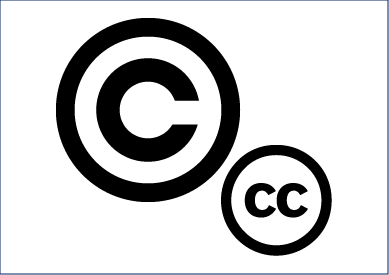Copyright Considerations for Online Classes

Fundamental knowledge of copyright issues
Basic concept
In May 2018, the Copyright Act was amended, and the Compensation System for Public Transmission for Educational Purposes was instituted. Under the system, the use of copyrighted works is permitted in online courses in the same way as in face-to-face courses, without obtaining permission from individual copyright holders, provided that school operators pay a lump-sum compensation to a designated association formed by rights holder organizations in various fields.
Please refer to the following document available on the SARTRAS website (in Japanese) for an explanation of the operational guidelines of this system in each case.
"Operational Guidelines for Article 35 of the Amended Copyright Act" (2021 version/ in Japanese)
Copyright protection of course materials
You need to ensure that every student is informed in advance about the copyrights of course materials. The following page guides you on how to remind students of the copyrights of videos, articles, and other materials uploaded to LMS as learning resources.
About the importance of copyright protection ("Things Your Students Should Know")
Please see the following documents for Kyoto University's policy and related notes.
Points to Note on Taking Online Courses (Notice) (March 23, 2021/ in Japanese)
Legal citation guidelines
Article 32 of the Copyright Act sets forth legal citations. By fulfilling the following conditions, you can cite copyrighted works (items have been excerpted from the copyrighted work citation checklist (p. 2), shown in the guidelines formulated by OCW (in Japanese) for all individuals at the university).
Copyrighted Work Citation Checklist
-
The work cited and used shall have been already published.
* Unpublished letters, diaries, or articles shall not be quoted. -
The work cited and used shall be clearly distinguished from the work that cites and uses the copyrighted one.
* Citation of a copyrighted written work (e.g., articles)
→ Each citation shall be placed in quotation marks or displayed in a different font.
* Citation of a copyrighted figure, table, photo, or painting
→ Each citation shall be indicated by means of a footnote, and the source must be clearly indicated. -
The source information, such as the work title and the author, shall be clearly indicated for the work cited and used.
* As a general rule, the title and author name(s) should be indicated.
* For publications, indicate the name of the publisher or journal, author(s), and the edition or volume number of the copyrighted work.
* Clearly indicate the source close in proximity to the work cited and used. -
The work that cites and uses other material shall be the main work, and the work cited and used shall be the subordinate work.
More specifically, the following items 1 to 3 apply.- Citations must be necessary for the purpose of your lecture (the purpose and necessity of the citation).
* Citations simply for information purposes without any particular necessity or for appreciation of the work cited and used (e.g., a painting or photo) are not permitted. - Citations shall not exceed the extent necessary for fulfilling the purpose of the citation.
* If the work cited and used occupies a larger space than the work that cites and uses the copyrighted work, the citation is highly likely to be assessed in a reverse main-subordinate relationship. - You shall not alter or delete some parts of the work cited and used.
* Citations made in an improper manner are unlawful.
- Citations must be necessary for the purpose of your lecture (the purpose and necessity of the citation).
Kyoto University OCW used the following process for citation.
・Citing References Flowchart (View the archive page of the National Diet Library due to the end of CONNECT public access)
Creative Commons (CC) License
When instructors publish their own works online, such as teaching materials they create, a Creative Commons (CC) license may be applied to the use of their works, which electronically sets user conditions for four "baseline rights" in advance.
- Attribution (credit indication)
- Commercial/Non-commercial
- No derivative works (prohibition of alteration)
- ShareAlike (inheritance of license for redistribution)
A combination of these four conditions allows you to publish your works with one of six types of CC licenses.
A CC license is a license with limited rights to works in a domain between "copyright," which claims the author's rights, and "public domain," which waives all rights. Students can refer to the conditions of use according to CC licenses. You can consult the following when publishing your works online.
Reference: What are Creative Commons licenses? (Creative Commons Japan/ in Japanese)

